If the wonderful wetlands of the world could have a birthday this would be it! Fifty three years ago today, the Convention on Wetlands was adopted to provide a framework for the conservation and sustainable use of wetlands; from muddy marshes and spooky swamps to lovely lakes and rushing rivers down to lazy lagoons and muddling mangroves. Why are they important? Why should we care?
Happy World Wetlands Day! (And a Happy Smew Year!)
Lunt meadows sunset
Photo by Charlotte Castle
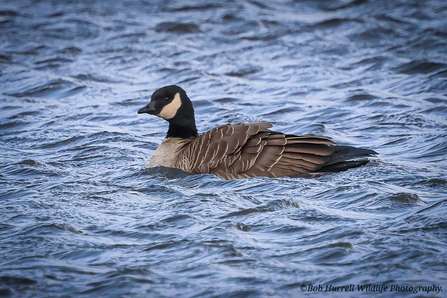
A cackling goose
Photo by Bob Hurrell
Wetlands are full to the brim with plant and animal life- 40% of the world’s species depend on wetlands and 200 new species are discovered every year in freshwater wetlands! There are otters, kingfishers, ducks, beavers, sharks, flamingos, manatees…. You may have to travel further afield for a few of them! Freshwater is vital for life on earth yet covers less than 1% of its surface, wetlands provide us with most of our water and food such as fish and rice. Next time you turn the tap on just think about where the water comes from. As well as being good flood and drought protection they store 50 times more carbon than rainforests! This year’s World Wetland Day theme is wellbeing; many of us are naturally drawn to water as a place to take time out, relax, and just be.
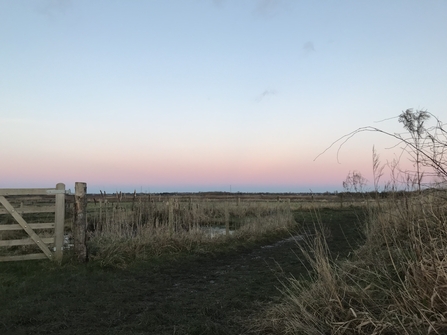
Lunt meadows sunset
Photo by Charlotte Castle
Despite all this wetlands are in danger of disappearing. Nearly 90% have been lost over the last 300 years and we are losing them at a rate 3 times quicker than forests. Locally here in North Merseyside and Lancashire huge areas were drained for farmland. Many of the wetlands left are not at their best, as such bountiful wonders they are open to misuse.
Our Lunt Meadows Nature Reserve bucks this trend, over the last decade we have been working hard to convert farm fields back into a mosaic of reedbeds, pools and wet grassland. The reserve also acts as a flood storage reservoir. And it has certainly been put to work, having had a few flooding events just in the last year!
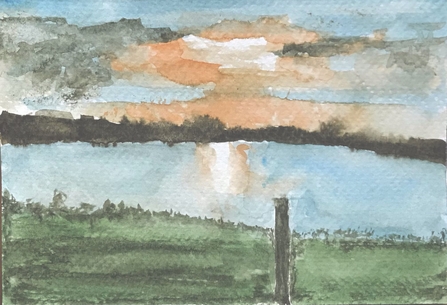
A beautiful watercolour of Lunt Meadows
by Joe Thomas from St Marks Church Netherton
‘Lunt Meadows is now one of only a few places where we make space for water, and we need more sites like this to take pressure off aging embankments and other infrastructure. As such, it is an exemplar site.’ Susan Slamon, Biodiversity Technical Officer for the Environment Agency.
It might not be as exotic as the Mekong delta, but Lunt Meadows is a very special place! I’m going to take you on a delve into its marvellous muddiness...
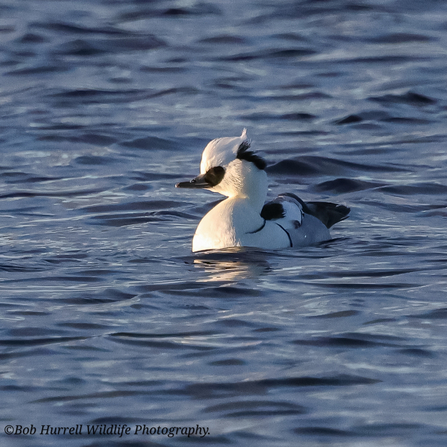
A striking smew
Photo by Bob Hurrell
This new year started with exciting sightings of a striking smew! These very sleek birds are scarce winter visitors from Scandinavia and Russia (climate change means warmer climes are closer) and they usually prefer the sunnier south east. Males are even rarer to see as they’re a bit lazy and like to stay close to home! We have also been playing where’s wally amongst the Canada geese and teals to spot a green winged teal and cackling goose from North America. It’s likely that increased storms are throwing birds off course. We also have our regular winter visitors including funky shovelers, posh pintails and Vs of pink foots streaming high above. Wetlands are an important stop off for migrating birds.
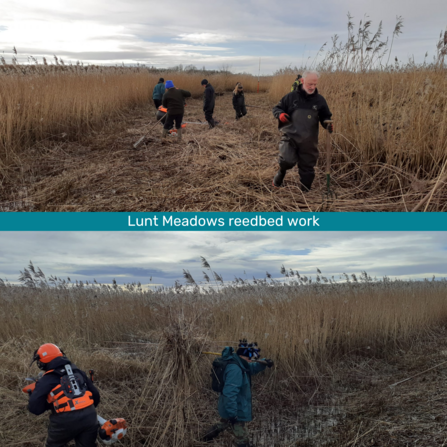
Volunteers working on the reedbeds at Lunt Photo by Amy Birtles
Down by the reedbeds where many conceal, you may hear the bittern boom and water rails squeal. Despite their unearthly noise bitterns are hard to spot skulking among the reeds. Watching the whispering waves of starlings before they drop down to chatter in the reeds is a definite delight. Reedbeds also clean water: they filter out nasty metals, remove nitrogen and trap sediment. They are even specifically planted for this purpose as part of sewage treatment.
Lunt Meadows is also home to magnificent birds of prey with marsh harriers circling and kestrels hovering overhead. In the early evening barn owls silently glide over the grasslands. In spring and summer vibrant wildflowers bloom with buzzing bees and sounds such as peewits, peeps and warbles fill the air. You may hear the plop of a water vole into the ditch! Our reserve provides an important home for this endangered species.
Even when we’re working in the thick of the mud (and sweat!) to be surrounded by such natural spectacles is a pleasure. So next time you need a breath of fresh air come and wander through a wetland wonder!

